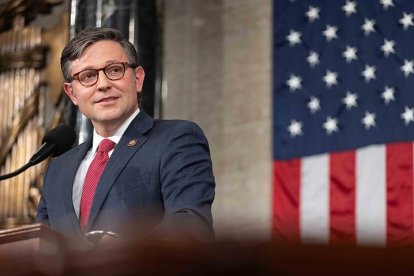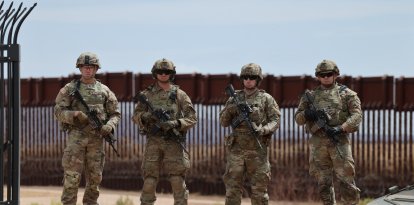Congressional leaders reach agreement to avoid government shutdown: 1.6 billion by 2024
Mike Johnson and Chuck Schumer will now have to get the legislation through the House and Senate.

Wikimedia Commons
Congressional leaders reached a preventive agreement to avoid a government shutdown, projected for next January 19. House Speaker Mike Johnson (R-LA) came up with a proposal along with Chuck Schumer (D-NY), which will now have to pass through both chambers to avoid the first shutdown since 2019.
The agreement is similar to the 2023 agreement, as it includes additional budget changes that would allow an increase in non-defense discretionary funding, including veterans' benefits, health care, and nutritional assistance. However, Johnson noted that this would be offset by negotiated spending cuts.
In turn, it includes an increase of about 3% in military programs and sets defense funding at $886 billion for the current fiscal year.
The House speaker acknowledged that the funding levels "will not satisfy everyone, and they do not cut as much spending as many of us would like." However, he clarified that this is the "most favorable budget agreement Republicans have achieved in over a decade."
In turn, Schumer celebrated the agreement on social media, where he wrote that the agreement would "keep the investments for hardworking American families secured by the legislative achievements of President Biden and Congressional Democrats."
Capitol Hill must send the legislation to Joe Biden's desk by January 19, when the first spending deadlines, such as Agriculture, Transportation, Energy and Veterans Affairs, will begin to arrive.
The history of the government shutdown in the United States
The United States decides how to spend public money year after year when Congress approves what is called the Appropriations Bill. The deadline that legislators have to agree to the bill is October 1. If there is no approved text by then, the Federal Government closes.
The logic comes from the National Constitution, specifically from Article 1, Section 9: "No Money shall be drawn from the Treasury, but in Consequence of Appropriations made by Law; and a regular Statement and Account of the Receipts and Expenditures of all public Money shall be published from time to time."
Once the closure is reached, certain agencies stop working. It can be all, some or one in particular. Its employees cannot work, and their pay is withheld until Capitol Hill agrees on a bill.
The United States was completely unaware of this scenario until well into the 20th century when the first government shutdown occurred in 1980. Jimmy Carter was the first president in charge during that situation, which lasted a little more than 24 hours. The closure was repeated in 1982 (twice), 1983, 1984 (twice), 1986, 1987, 1990, 1995 (twice), 2013, 2018 and 2019.
Counting 1980, on the first five occasions, Democrats controlled the House of Representatives, which usually promotes the Appropriations Bill. Ronald Reagan was the president who witnessed the most government shutdowns, eight between 1981 and 1989.
The last one, coincidentally the longest, was in 2019, when 35 days passed until everything worked normally again. It is estimated that 800,000 public employees did not receive their money during that time period.
One of the most memorable scenes of that closure occurred when Donald Trump, then president, had to receive the Clemson University football team, which had recently won the National College Football Championship. Since employees could not work, including in the kitchen, the president took out his wallet and bought food from McDonald's, Wendy's, and Burger King. "If it's American, I like it. Everything is American. No matter what we did, there's nothing you can have that's better than that, right?" the Republican said at the time.
RECOMMENDATION





















